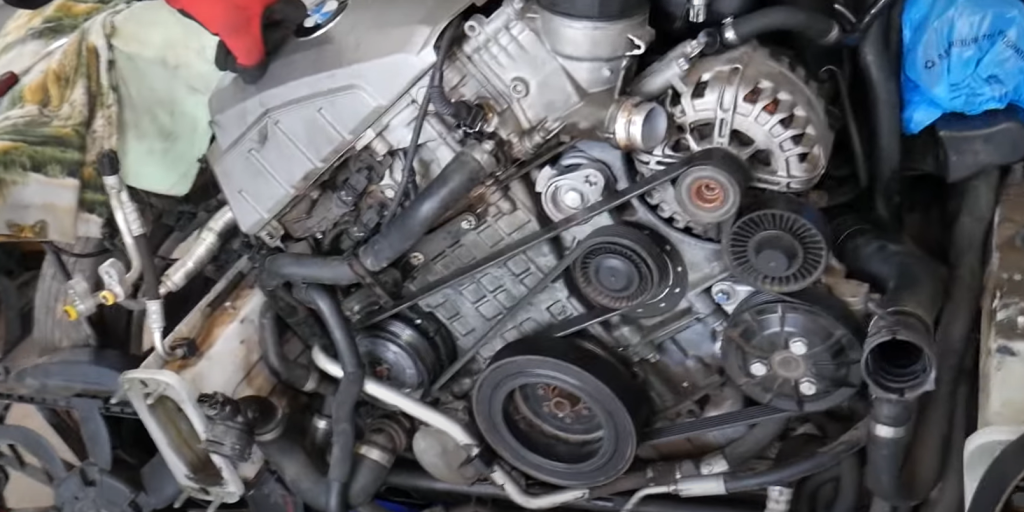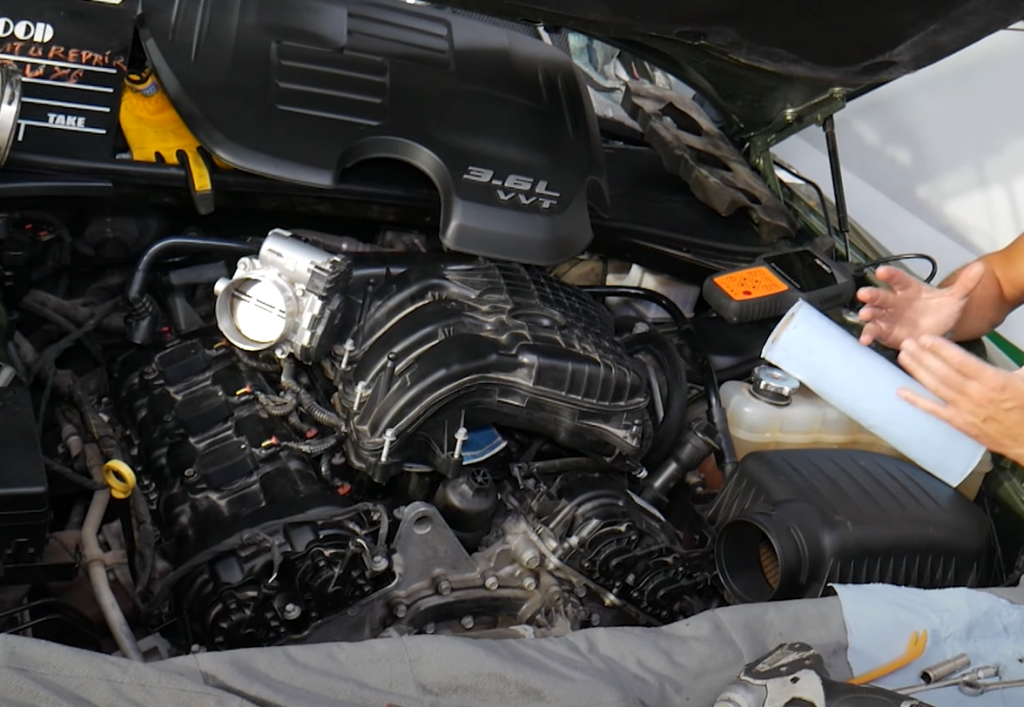A serpentine belt that keeps coming off can be frustrating and potentially dangerous for your vehicle. This essential component drives multiple engine accessories and is crucial for proper car function. A serpentine belt typically comes off due to misaligned pulleys, a failing tensioner, or a worn-out belt.
Damaged pulleys or bearings can cause the belt to slip off its track. Oil or coolant leaks may also contribute to belt slippage. In some cases, issues with the air conditioning compressor or water pump can lead to belt dislodgement.
Regular inspections and maintenance can help prevent this problem. Checking the belt tension, examining pulleys for wear, and looking for signs of contamination are important steps. If you notice squealing noises or visible damage, it’s time to address the issue before the belt comes off while driving.
Key Takeaways
- Misaligned pulleys, failing tensioners, and worn belts are common culprits for dislodgement
- Regular inspections can help identify potential issues before they cause belt failure
- Proper installation and addressing underlying problems are key to preventing recurring belt issues
Understanding the Serpentine Belt
The serpentine belt is a crucial engine component that drives multiple accessories. It’s a long, winding belt that connects various engine parts and keeps them running smoothly.
Function and Importance
The serpentine belt powers essential vehicle systems. It drives the alternator, which charges the battery and powers electrical components. The belt also runs the power steering pump, making steering easier.
In many cars, it operates the air conditioning compressor and water pump. The water pump is vital for circulating coolant and preventing engine overheating.
A properly functioning serpentine belt ensures these systems work correctly. Without it, the car may not start or could overheat quickly.
Regular checks of the serpentine belt are important. Signs of wear or damage can indicate potential problems before they become serious.
Common Types and Materials
Serpentine belts come in different types and materials. Most modern vehicles use a single, multi-ribbed belt.
The most common material is ethylene propylene diene monomer (EPDM) rubber. EPDM belts are durable and resist cracking and wear better than older materials.
Some high-performance vehicles use reinforced belts. These may contain aramid fibers for added strength.
Belt designs vary based on the vehicle model. They can have different numbers of ribs and lengths. It’s crucial to use the correct belt type for your specific car model.
Proper belt tension is essential for optimal performance. Many newer cars have automatic tensioners to maintain the right amount of pressure.
Typical Reasons for Belt Dislodgement

A serpentine belt can come off for several reasons. These include problems with alignment, worn parts, and incorrect belt tension. Each issue can cause the belt to slip or detach completely.
Misalignment Issues
Misaligned pulleys can cause a serpentine belt to slip off. When pulleys are not in proper alignment, the belt may not track correctly. This can lead to uneven wear and eventual dislodgement.
Misalignment often results from:
- Loose or damaged engine mounts
- Worn bearings in accessory components
- Improper installation of pulleys or accessories
To check for misalignment, mechanics use specialized tools. These tools measure the angles between pulleys. Even small misalignments can cause problems over time.
Worn Componentry
Worn or damaged parts in the belt system can lead to belt failure. The main components to check include:
- Pulleys
- Tensioner
- Idler pulley
Worn pulleys may develop grooves or rough spots. These imperfections can catch on the belt, causing it to slip off. A failing tensioner cannot maintain proper belt tension. This allows the belt to become loose and potentially come off.
Signs of worn components include:
- Squealing or chirping noises
- Visible cracks or damage on pulleys
- Excessive play in the tensioner arm
Regular inspections can catch these issues before they lead to belt failure.
Improper Belt Tension
Incorrect tension is a common cause of belt dislodgement. If the belt is too loose, it can slip off the pulleys. If it’s too tight, it can put excess strain on bearings and cause premature wear.
Most modern vehicles use an automatic tensioner. This device maintains proper tension as the belt stretches over time. However, these tensioners can fail, leading to tension problems.
Signs of improper tension include:
- Belt squealing, especially during startup
- Visible slack in the belt
- Belt vibration or fluttering
Mechanics use tension gauges to ensure the belt is properly tightened. Regular checks and adjustments can prevent many belt-related issues.
Inspection and Maintenance Tips
Keeping your serpentine belt in good condition requires regular checks and knowing what to look for. These steps can help prevent unexpected belt failures.
Regular Inspection Routine
Check your serpentine belt every 3 months or 3,000 miles, whichever comes first. Look for signs of wear and damage. Listen for unusual noises when the engine is running, which may indicate belt problems.
Examine the belt tension. A properly tensioned belt should have about 1/2 inch of give when pressed firmly. Too loose or too tight can cause issues.
Inspect all pulleys and components the belt touches. Make sure they spin freely and are properly aligned. Misaligned pulleys can cause the belt to come off.
Check for any fluid leaks near the belt. Oil or coolant can make the belt slip and come off more easily.
Identifying Wear and Tear
Look for cracks, fraying, or missing chunks in the belt. Small cracks are normal, but deep or numerous cracks mean it’s time for a replacement.
Check for glazing on the belt’s surface. A shiny, hardened appearance indicates the belt is wearing out and losing grip.
Feel the belt’s ribs. If they feel smooth instead of grippy, the belt is wearing down and needs to be replaced soon.
Inspect the belt edges for uneven wear. This can signal misalignment or a failing pulley.
Look for belt material buildup in pulley grooves. Clean grooves if needed to ensure proper belt seating.
Proper Installation Techniques
Installing a serpentine belt correctly is crucial for preventing it from coming off. The right belt choice and proper tensioning are key factors in ensuring a secure fit.
Choosing the Right Belt
Select a belt that matches your vehicle’s specifications. Check the owner’s manual or use an online belt finder tool to get the correct size and type. Measure the old belt’s length and compare it to the new one.
Look for signs of wear on the old belt. Cracks, fraying, or glazing indicate it’s time for a replacement. Choose a high-quality belt from a reputable manufacturer.
Before installation, clean all pulleys thoroughly. Remove any debris or oil residue that could cause slippage.
Tensioning and Alignment Best Practices
Proper tension is vital for keeping the belt in place. Use a belt tension gauge to achieve the correct tightness. Over-tensioning can damage bearings, while under-tensioning leads to slipping.
Align all pulleys carefully. Even slight misalignment can cause the belt to come off. Use a straightedge to check that pulleys are in line with each other.
Install the belt following the correct routing diagram. Most vehicles have a sticker under the hood showing the proper path.
After installation, rotate the engine by hand to ensure the belt tracks correctly on all pulleys. Listen for any unusual noises during the first start-up.
Troubleshooting Common Problems
When a serpentine belt keeps coming off, it’s often due to issues with pulleys or tension. These problems can cause the belt to slip, wear out quickly, or come off entirely.
Diagnosing Pulley Problems
Check all pulleys for signs of damage or misalignment. Look for cracks, chips, or uneven wear on the pulley surfaces. Spin each pulley by hand to feel for roughness or resistance.
Listen for unusual noises like squealing or grinding when the engine runs. These sounds can indicate a failing pulley bearing.
Inspect the belt path for any obstructions or debris that could interfere with smooth operation. Remove any foreign objects carefully.
Use a straightedge to check pulley alignment. Place it against multiple pulleys to ensure they’re in line. Misaligned pulleys can cause the belt to come off.
Solving Tension Issues
Check the belt tensioner for proper function. Push on it to feel for smooth movement and strong spring resistance. A weak or stuck tensioner can’t keep the belt tight.
Measure belt tension using a tension gauge. Compare the reading to the manufacturer’s specifications. Adjust if needed.
Look for signs of belt stretching, like excessive slack or glazed appearance. A stretched belt may need replacement to restore proper tension.
Inspect for any fluid leaks near the belt. Oil or coolant can make the belt slip and come off. Fix leaks and clean affected components thoroughly.
Frequently Asked Questions
Serpentine belts can come off for various reasons, from mechanical issues to environmental factors. Understanding these causes and knowing how to address them can help keep your vehicle running smoothly.
What causes a serpentine belt to slip and come off?
A serpentine belt can slip and come off due to several factors. Misaligned or damaged pulleys are common culprits. A failing tensioner can also lead to belt slippage.
Wear and tear on the belt itself can cause it to loosen and eventually detach. Oil or coolant leaks can make the belt slippery, increasing the chances of it coming off.
How can I troubleshoot a serpentine belt that keeps detaching?

To troubleshoot a detaching serpentine belt, start by inspecting the belt for signs of wear or damage. Check the tension to ensure it’s neither too loose nor too tight.
Examine all pulleys for proper alignment and any signs of damage. Look for issues with the tensioner, as it plays a crucial role in maintaining proper belt tension.
What preventive measures can be taken to ensure the serpentine belt remains in place?
Regular maintenance is key to keeping the serpentine belt in place. Have the belt inspected during routine service appointments.
Replace the belt at recommended intervals, even if it appears to be in good condition. Keep the engine area clean and free of oil or coolant leaks that could affect belt performance.
Is it common for a serpentine belt to come off due to weather conditions like rain?
It’s uncommon for rain alone to cause a serpentine belt to come off. However, extreme weather conditions can exacerbate existing issues.
Excessive moisture can sometimes cause temporary slippage, but this typically resolves once the belt dries. If rain consistently causes problems, it may indicate other underlying issues.
Can a serpentine belt come off while driving, and what should I do if it happens?
A serpentine belt can come off while driving, though it’s not common. If this happens, you may notice a loss of power steering, air conditioning, or electrical system problems.
If you suspect the belt has come off, safely pull over and turn off the engine. Do not attempt to drive further, as it can cause damage to other engine components.
Why does a drive belt continuously dislodge, specifically in lawn mowers like zero turn models?
In lawn mowers, including zero turn models, a continuously dislodging drive belt often points to misalignment issues. The pulleys may not be properly aligned, causing the belt to slip off.
Worn or damaged pulleys can also lead to belt dislodgement. Regular inspection and maintenance of the mower’s belt system can help prevent these issues.


